
Volume XVII, Issue 22 # May 28 - June 3, 2009 |
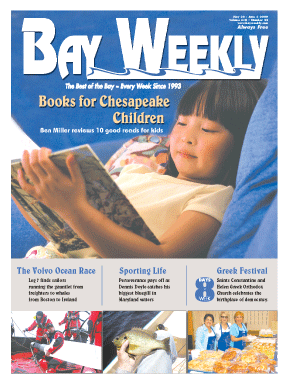 |
Inspired by Nature
Books for Chesapeake Children
by Ben Miller
Surrounded by nature in Chesapeake Country, children’s book writers and illustrators look there for inspiration. Then they report or imagine a story, weave in positive messages and write at a level attractive to children of a particular age.
The following books — a sampling of what we’ve received at Bay Weekly and found on our shelves — show how inspiration evolves into print.
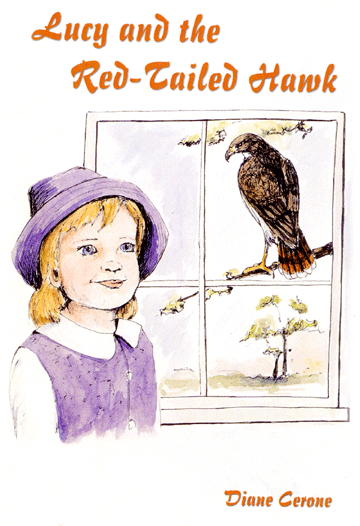
 Rescuing a Hawk
Rescuing a Hawk
For Annapolis writer Diane Cerone, inspiration was not what she saw, but what her two-year-old granddaughter Gretchen saw: a big bird dangling from a tree.
The big bird turned out to be a rehabilitated red-tailed hawk now working in nature-education programs. The hawk had escaped its handler that morning, and the bird’s leash was tangled in the branches of the tree. Thanks to Gretchen’s sharp eyes, the bird was rescued.
Cerone turned this real-life event into Lucy and the Red-tailed Hawk, a little book for children and for adults to read to children. Lois Auer, who has a federal permit to rehabilitate birds of prey, drew the illustrations.
2007 paperback self-published by Dorrance Publishing Co.: $17
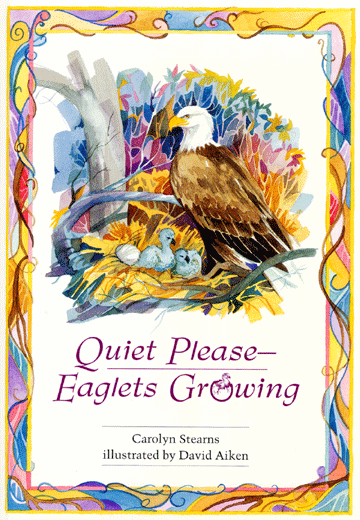
 Preserving an Eagle Nesting Site
Preserving an Eagle Nesting Site
In Carolyn Stearns’ book, Quiet Please — Eaglets Growing, the hero is not a two-year-old girl but a 10-year-old boy, John-B, who mounts a campaign to save a stand of oak trees where two eagles nest every year on the Chesapeake’s Western Shore.
John-B’s campaign is a model for citizen action and one with a happy and unmuddled conclusion: The nesting sites are saved.
Students John-B’s age and younger can enjoy this book.
Eastern Shore artist David Aiken illustrates the book with free-flowing colors.
2002 hardback by Tidewater Publishers: $11.95
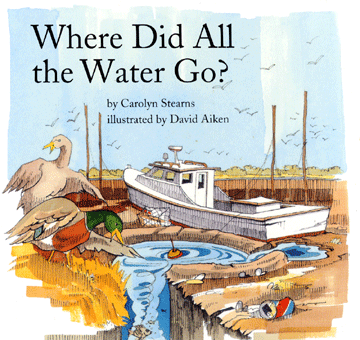
 Extreme Tides on Chesapeake Bay
Extreme Tides on Chesapeake Bay
An earlier book by Stearns, her first — Where Did All the Water Go? — describes from the narrator’s perspective, again a young boy, what happens when wind, tides, cold temperatures and high pressure combine to blow the water from the Bay. Shallow places become mud flats, and what was once familiar becomes strange.
Those who live near the Chesapeake can recognize how we are comforted by the Bay’s dependable rhythms and disturbed by sudden changes.
David Aiken produced playful illustrations to complement the writing.
1998 hardback by Tidewater Publishers: $12.95
Coming of Age
Good children’s books have messages, often inspirational messages. Young people come of age as they deal — perhaps for the first time — with sickness, death and disappointment.
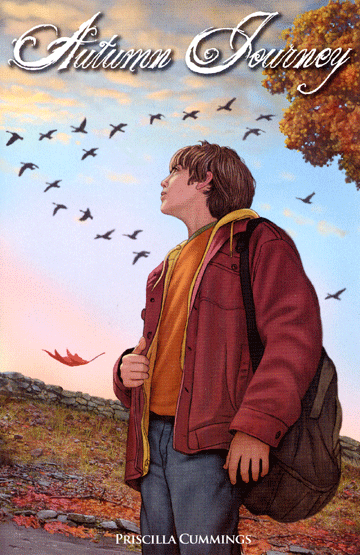
 An Old Man, a Boy and a Goose
An Old Man, a Boy and a Goose
Annapolis writer Priscilla Cummings covers themes of our times in her book Autumn Journey. Fifth grader Will’s life has turned upside down. Will’s father has lost his job on the Baltimore docks, and his family moves to rural Pennsylvania to live with Will’s grandparents.
With his father grieving the loss of his livelihood, the boy’s grandfather becomes his guide and supporter. He introduces him to hunting — Cummings discusses the ethics of hunting with empathy and understanding — and the outdoors. But when Will’s grandfather has a heart attack, Will’s faith in life and his family is threatened once again.
2008 paperback by Cornell Maritime Press/Tidewater Publishers: $12.95
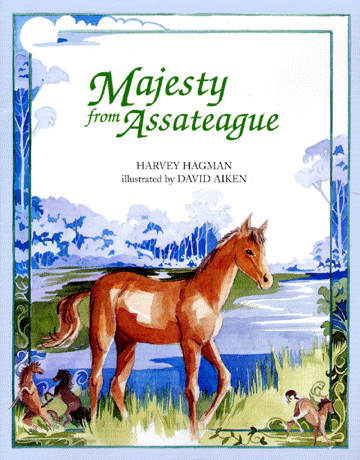
 A Chincoteague Pony
A Chincoteague Pony
In Majesty from Assateague, another book for young readers, Michael at age 10 has lost his father and mother in a car accident that left him crippled. Michael slowly recovers thanks to his grandfather, his grandmother and a Chincoteague pony called Majesty.
This book continues the story of the annual Chincoteague pony swim, the pony penning and auction made famous in that classic children’s book by Marguerite Henry, Misty of Chincoteague.
Majesty from Assateague is written by Harvey Hagman, illustrated by David Aiken.
2000, 2003 paperback by Tidewater Publishers: $8.95
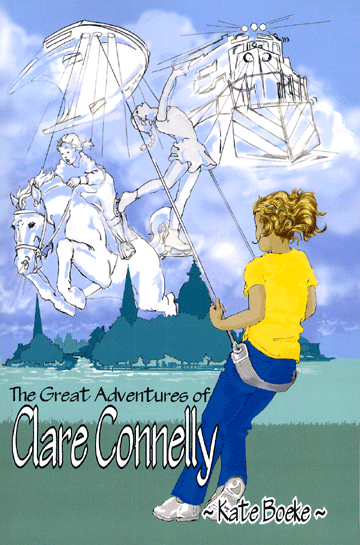
 A Girl with Imagination
A Girl with Imagination
In Kate Boeke’s book, 12-year-old Clare Connelly has the opposite problem of many protagonists of children’s stories: For Clare, nothing happens.
Life in Annapolis is pretty dull — booooring, in fact — especially middle school, her social life, her divorced parents’ frosty relationship and — well, you get the picture.
To enliven her life, Clare uses her active imagination. She daydreams, during class and whenever she feels under pressure, hence the book’s title: The Great Adventures of Clare Connelly.
When Clare gets a part in the middle school play, reality — and real life dramas — intrude. Clare begins to take steps to maturity.
1996, 2008, self-published paperback: $13.99
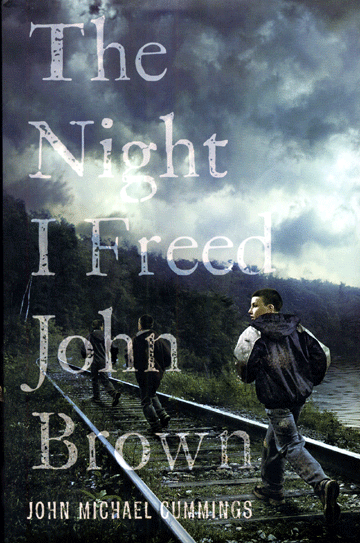
 Breaking Away
Breaking Away
Farther west from Chesapeake Country, John Michael Cummings (a friend of this reviewer) has written a young adult novel, The Night I Freed John Brown, based on his experiences growing up in the midst of the national park in Harpers Ferry.
Josh doesn’t know where he fits in. His brothers are bullies; his father is always angry; his mother is protective, but passive; and tourists stare at him whenever he walks out his front door.
In the midst of this antique village, Josh’s life threatens to be as locked in by the looming mountains as his father’s has been. Then a Shakespeare-declaiming park ranger and his three sons close to Josh’s age move in next door.
Josh glimpses another world. His life begins to explode with possibility — and danger — as the family dynamic is threatened.
In the end it is Josh — not John Brown — who breaks free.
2008 hardback by Philomel Books: $17.99
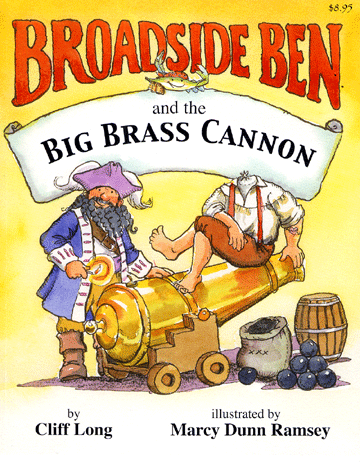
 Pirate Pranks
Pirate Pranks
For a dose of non-reality aimed at smaller kids, Broadside Ben and the Big Brass Cannon tells the story of a pirate chief who lived happily “on the very outskirts of Annapolis” with his chief gunner, Headless Bill, and his “constant companion,” Grumpy Stumpy the Pirate Crab.
The big brass cannon of the title promises to make Broadside Ben and his pirate crew rich preying on merchant ships in Chesapeake Bay. Alas, there appears to be a bit more to piratical success than shouting “Run in the Gun! Load the Gun! Run out the Gun!”
Annapolitan Cliff Long, also known as Captain Billy Baye, authored this account of 18th century piracy based on Watermark Cruises’ Pirates of the Chesapeake tour. Marcy Dunn Ramsey of Chestertown drew the appropriately whimsical illustrations.
2004 paperback by Watermark Cruises
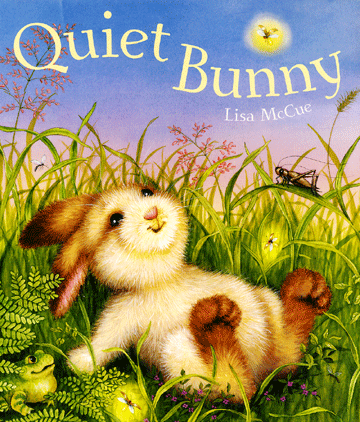
 Bunny Makes a Sound
Bunny Makes a Sound
Quiet Bunny, by Lisa McCue of Annapolis, is filled with charming drawings of animals, birds and insects in nature, and especially the Quiet Bunny hero of the story.
Quiet Bunny is seeking to find his own voice amidst the sounds of the meadow and forest. Quiet Bunny attempts to imitate the voices of other creatures, but not a sound comes out.
Finally, Quiet Bunny learns that he has his own individual sound to make.
McCue is an accomplished illustrator. She wrote this book — her first as both writer and illustrator — to encourage children to make sounds that contribute to early speech development.
This is a perfect book for an adult to read to a pre-reader or an early reader.
2009 hardback by Sterling Publishing Co. Inc.: $14.95
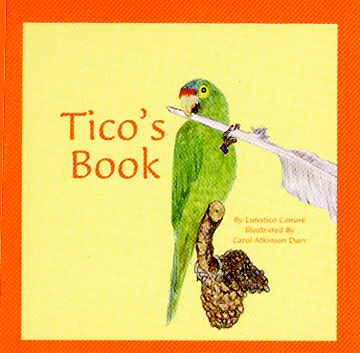
 A Parrot Writes a Book
A Parrot Writes a Book
For another non-human perspective, read Tico’s Book where Lunatico Conure (Tico) describes his life as a pet parrot.
Tico’s Book is illustrated by collaborator and companion, Carol Atkinson Durr of Pasadena.
Hardback self-published by ticosbooks.com: $12
Writing a Children’s Book
Want to try your hand at writing a children’s book?
“It’s not easy,” said Jonna Jones of Cornell Maritime Press, Inc., which includes Tidewater Publishers. “Because children’s books are small, many people underestimate how hard they are to write.”
“It is a specialized talent,” Jones said. “You have to know the educational level of your audience and what appeals to them. In some ways, writing books for adults is easier because you already know your audience.”
Yet Carolyn Sterns found success not once but twice in creating and publishing children’s books from what she saw around her. Where Did All the Water Go? was inspiration turned to pure gold: First Bay Weekly, then Tidewater Publishers printed it, her very first attempt at children’s story writing.
So if you’re a hopeful children’s writer, remember that luck happens. So, with increasing ease, does self-publishing.